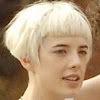
1. Decide on Formality:
Usually the event invitation will clue you into the formality of the event, whether it's casual or black tie. But sometimes even that will cause confusion (short dress or long?)
In general, the later in the day the event (after 6 p.m.), the dressier. Long dresses are usually reserved only for formal (black tie) occasions.
While some fabrics are year-round -- silk, brocade, organza, jersey -- fabrics like velvet and gold spangles are best reserved for winter holidays.
Dress Code Definitions: Black Tie, etc.
2. Flatter Your Figure:
The most important feature of your new dress is how well it flatters you.
Remember that darker colors and simple cuts (a sheath, an A-line) are the most flattering.
Show off your best feature. If you have gorgeous eyes, then play them up with beautiful makeup, off-the-face hair and jeweled earrings in a complimentary shade.
Not sure what your best asset is? Ask a friend or significant other. Or go to a store that sells special occasion dresses and enlist the salesperson's help.
Dresses for Every Body Type
3. Choose a Color:
You could just wear a little black dress (classy, flattering and slenderizing), but why not explore some of the other dressy options?
Red, bold prints, even gold are dramatic enough for evening wear. Pastels, mid-range brights and soft prints look great for dressy day occasions.
Blue (from navy to royal), pink (from cotton candy to fuchsia) and white (from candlelight to cream) look great on almost everyone. Remember that the "Don't wear white to a wedding" wisdom is still considered a fashion don't by most women.
7 Style Secrets from the Red Carpet
4. Pick a Style:
Catalogs, the internet and magazines are a great places to seek special occasion dress inspiration.
Instead of going with something trendy, try to find a dress that reflects classic, timeless elegance. Remember that you'll have to look at photos of you in the dress for years to come.
Classic special occasion dresses are often deceptively simple, but they usually let the beauty of the wearer shine through. A few examples: the little black dress (a.k.a the cocktail dress), a goddess gown (draped and rouched), a ballgown, a slip dress.
Dress Glossary
5. Shop:
Set a budget before shopping. Special occasion dresses usually cost more than $100, but if you comparison shop you can find one that works in your price range.
Shop secondhand stores and sales to save even more money on a dress.
If you shop in a store, dress for the day by bringing along heels, any special accessories you know you want to use and a strapless bra.
When shopping online, make sure you understand both the sizing (know your measurements and check against a size chart on the site) and the return policy (some stores don't take returns on dresses.)
Prom and Occasion Dresses
6. Accessorize:
The trimmings will take their cue from the dress, but for special occasions your jewelery usually gets bigger and your bag and shoes get smaller (as in strappy sandals).
Although you may want to add tons of glitz, remember that you can kill a look with too much matchy-matchy accessorizing. Find earrings, necklace and bracelet that compliment each other without being a matching set.
If your legs aren't perfect enough to go bare need camouflage and you don't like to wear leg makeup, then opt for super-sheer hose or fishnets.
 I'm a bit old-fashioned when it comes to the holidays--I still believe we should dress up for them. You can wear your jeans 364 days a year, when the family is gathered together for a celebration, put a little more effort into your outfit.
I'm a bit old-fashioned when it comes to the holidays--I still believe we should dress up for them. You can wear your jeans 364 days a year, when the family is gathered together for a celebration, put a little more effort into your outfit.













 To put it bluntly: the cropped bob is extreme. It's not quite a pixie crop (below) nor a bob. Short all over, even with a heavily shortened blunt cut fringe, it's can only be worn by those who ooze confidence. Just look at Agyness Deyn's cropped, fringed bob (right). Attention grabbing, it's even far less subtle with peroxide blonde hair which I'm tipping as the best colour to wear it with.
To put it bluntly: the cropped bob is extreme. It's not quite a pixie crop (below) nor a bob. Short all over, even with a heavily shortened blunt cut fringe, it's can only be worn by those who ooze confidence. Just look at Agyness Deyn's cropped, fringed bob (right). Attention grabbing, it's even far less subtle with peroxide blonde hair which I'm tipping as the best colour to wear it with.
.jpg)